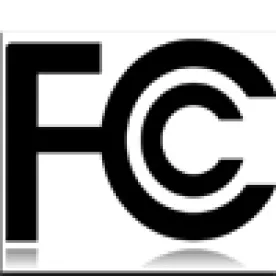Faced with the rapid growth of increasingly complex wireless products, the FCC proposes to upgrade its equipment authorization program to prevent harmful interference without stifling innovation and product development.
***Please note: Comments are due on October 9, 2015 and Reply Comments are due on November 9, 2015.***
The Federal Communications Commission (FCC) is proposing to reform its equipment authorization rules to keep pace with the soaring rise in the number of innovative radiofrequency (RF) products being introduced to meet escalating consumer and business demand for a broad range of devices.
The rule changes outlined in a Notice of Proposed Rulemaking (NPRM) will affect all RF devices, defined as devices that emit RF energy by any means, whether intentionally or unintentionally. This definition would include (to name just a few): devices for mobile communications, broadband access, wireless networking, wireless medical devices, cordless phones, business and personal computing equipment and peripherals, wireless audio, radio receivers, TV interface devices, microwave ovens, and TV and FM receivers. The FCC’s proposed action (the first major overhaul of the equipment program since the last reform more than 15 years ago) is warranted, according to the FCC, by the evolution of the manner in which “today’s RF equipment is being designed, manufactured, and marketed—as well as the sheer number of such devices that need to be authorized.”
Evaluation and approval of equipment under the FCC’s equipment authorization rules is the FCC’s primary means for ensuring that RF devices operating in the United States do not cause harmful interference and otherwise comply with FCC rules. The FCC enforces these rules by prohibiting, with some exceptions, the marketing (including sale, advertising, display, and shipping) of an RF device before it has gained FCC approval or otherwise complies with the FCC equipment authorization rules. The equipment rules are even more important today with the advent of the Internet of Things and as new technical developments fuel rapid growth in the global electronics industry.
The Proposals
In an 80-plus page NPRM, the FCC proposes to streamline and update the equipment rules to do the following:
Combine two separate product approval programs—the Declaration of Conformity (DoC) and Verification processes—into one product self-approval process.The new process would apply to equipment that has a strong record of compliance and for which there is minimal risk of harmful interference, including all equipment currently subject to the DoC and Verification procedure.
Codify and clarify the Certification rules that apply to modular transmitters, including those in products used in “licensed” radio services.
Streamline and update the rules that apply to radios in which the RF parameters are controlled by software (i.e., “software defined radios” or “SDR”) to facilitate the use of software upgrades to modify the RF operating parameters of certified devices in the field.
Modify the “permissive change” rules to eliminate unnecessary burdens on manufacturers and constraints on design flexibility.
Clarify who is responsible for compliance with FCC rules with respect to devices that incorporate one or more certified modular transmitters, including when a third party modifies equipment or repairs and refurbishes equipment.
Streamline the information required in certification applications.
Address the needs of manufacturers developing in a competitive environment by codifying practices that protect the confidentiality of market-sensitive information—upon request for some types of information and automatically for other types of information.
Enable manufacturers to benefit from reduced costs and improved product designs as well as avoid delays in time to market by providing for electronic labeling under the E-LABEL Act.
Clean up the regulations by eliminating unnecessary rules and consolidating requirements found in various rule parts into Part 2 of the FCC rules.
Implications
These proposals raise a wide range of equipment approval issues that affect technical and legal requirements and compliance, as well as many practical considerations, including product development timeframes and relative responsibilities of parties in the manufacturing and distribution chain. Interested parties include manufacturers (including Original Equipment Manufacturers (OEMs)), test houses (including authorized Telecommunications Certification Bodies (TCBs)), importers, distributers, and electronics manufacturing service companies.
Actions
The FCC is soliciting public input on the proposed changes in Comments and Reply comments.At the behest of several industry associations and a standards committee (ANSI), the FCC agreed to an extended period for public input on the “complex technical issues” raised in this NPRM.
The deadline to file comments regarding the proposed rules is October 9, 2015, and reply comments are due November 9, 2015.




 />i
/>i

